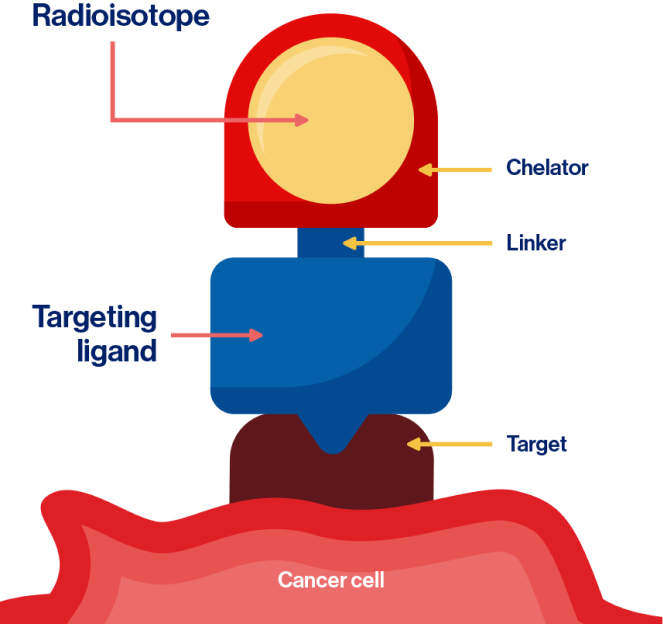
Foundations of theranostics
Radioligand therapy (RLT) and radioligand imaging (RLI) offer a novel, theranostic approach to targeting and treating certain types of cancer.1 This section of the Novartis RLT Institute is designed to help health care professionals (HCPs) understand the basic scientific foundations of RLT. By focusing on the science, we aim to demystify radiation and safety concerns and build confidence in offering patients this approach to precision medicine in cancer.
An emerging pillar of oncology care
What are radioligands?
Radioligands are molecules that combine a targeting compound (ligand) with a radioactive isotope (radioisotope) to locate and destroy cancer cells.2,3
They work by binding to specific biomarkers on cancer cells and delivering radiation precisely to the targeted cancer cell, either for diagnostic or therapeutic purposes, known as RLI and RLT, respectively.2

Radioligands are built with a well-defined structure composed of 4 key components.2
These components work together in a cohesive unit to deliver precision-targeted radiation to cancer cells in the body for both diagnostic imaging and therapy, with the goal of limiting damage to surrounding tissue.2
Radioligands are radiopharmaceuticals—depending on the context, RLT may be referred to by other names such as1,5-7:
- Targeted radionuclide therapy
- Molecular radiotherapy
- PRRT (peptide receptor radionuclide therapy)
- TAT (targeted alpha therapy)
- RPT (radiopharmaceutical therapy)
